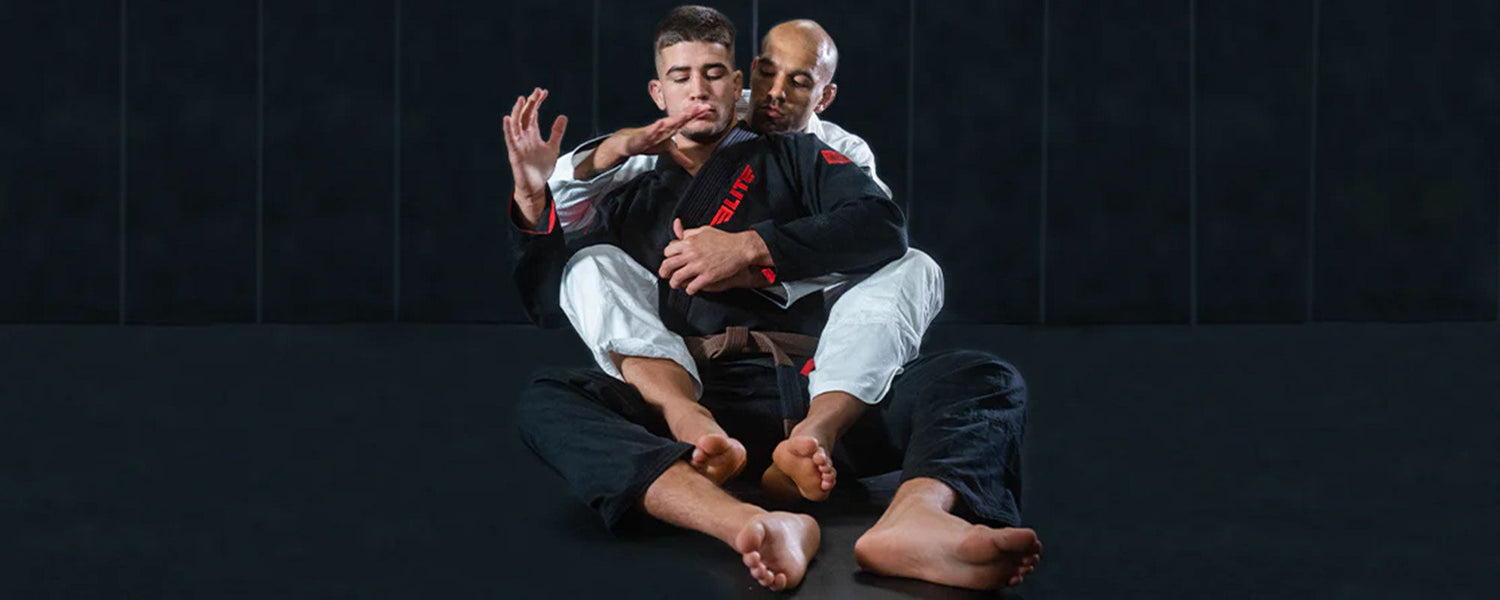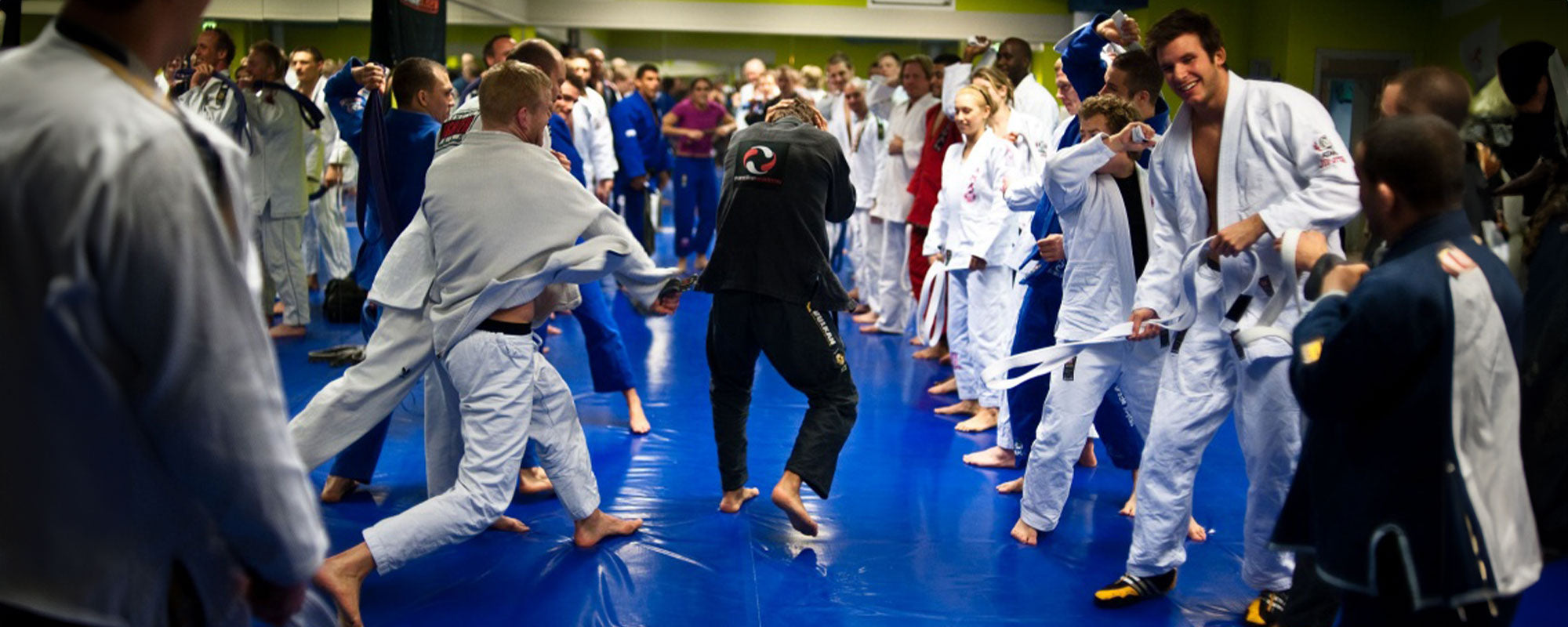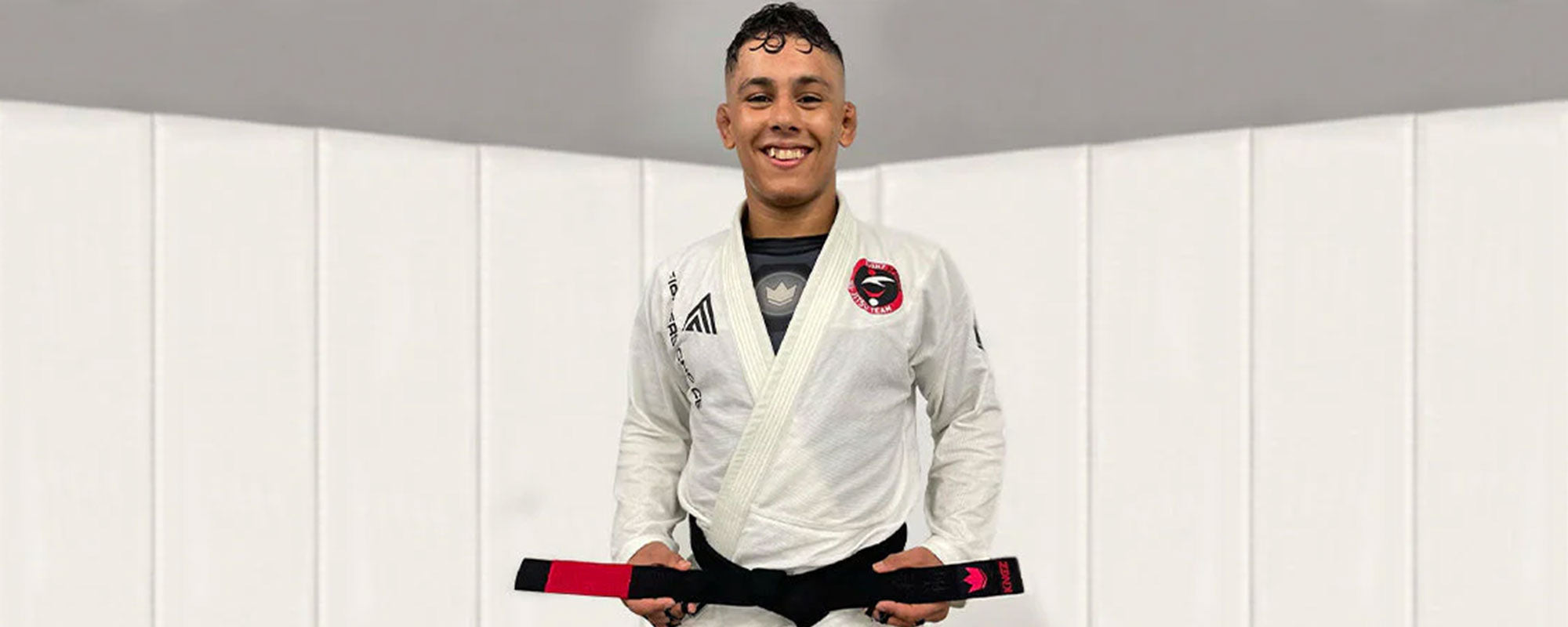Table of content
Brazilian Jiu-Jitsu (BJJ) is a martial art that focuses on ground combat, with the goal of subduing your opponent with minimal injury. Knowing how to use various chokeholds can make all the difference between winning and losing. Chokes are among the most effective ways to finish a fight in BJJ and MMA. Chokes are used to cut the flow of oxygen to the brain, which can cause the opponent to lose consciousness. There are numerous types of chokes. This article takes an in-depth look at the most popular BJJ choke holds and how they can be utilized in MMA!
1. Standing Choke
Standing chokes are the most basic Brazilian Jiu-Jitsu techniques yet they are efficient against inexperienced opponents that do not know how to escape.
To perform a standing choke:
- Begin by grabbing hold of your opponent’s neck and head.
- Once you have control of this region, put one hand over the other to create an even platform.
- Maneuver the opponent until they are forced to stand.
- Once the opponent is standing, put your arms around the neck and press tightly.
Also read: How to Make the BJJ Cross Collar Choke Work
2. The Guillotine Choke
The guillotine choke is often regarded as BJJ's most effective method for subduing an opponent. This technique can be utilized in both no-gi and gi BJJ. The following are the steps for how to do the guillotine choke:
- Tightly grasp your opponent's head to prevent it from moving.
- Place both your hands over the opponent’s head or grasp the chin using at least one hand.
- Once you've got a firm grip, raise your other hand to the top of the opponent’s head. This will keep the head still as you execute the choke.
- Then, raise your legs and wrap them around your opponent's body.
- After you've got your legs in position, you must press your thighs tightly and then pull down on your opponent's head.
3. The Rear-Naked Choke
The rear-naked choke is applied from the back and is difficult for an opponent to escape from. Below are given the steps to apply a rear-naked choke.
- The first thing you need to do to apply the choke is to get behind the opponent. This is the crucial rear portion.
- If you assume your opponent is right-handed, your right arm should be behind them. The right arm of your opponent's left-hand rests on your left's biceps. The left arm now extends towards the back of your head, but not too far, so you can't just reach up to take your hand.
- Noteworthy is the next step. Next, push your left arm forward and lower your head with your left. The bony part on your right forearm is closest to the wrist. While you tighten your right arm to stop their head from moving, pull the bony part of the right forearm up and back into their neck. You can do both the left and right side by side to create a more substantial choke than simply applying pressure to their head.
- You have two options: put the choke in their throat, stop them from breathing, or push their head to the side while pressing down on their neck. This cuts off the blood. You can do either work or both, but if careful enough, each will stop blood from flowing.
4. The Triangle Choke
The triangle choke has applications both on and off the mat.
- Ensure the opponent is in the proper position.
- Then, execute a triangle choke by wrapping your legs around the opponent’s neck and your other arm around the opponent’s armpit.
- When you've finished setting up the choke, pull the opponent's head down using your legs and then squeeze the opponent’s neck with your arm.
5. The Kimura Lock
In MMA, the Kimura lock is accomplished by putting your opponent in an open rear choke and then wrapping your arm around the throat. The airway becomes blocked and can cause the opponent to lose their balance and tap out.
- The arm to your right is the one you control.
- Take the arm of the controlled arm and hold it with the hand closest.
- Example: This would be the right hand on their left wrist.
- Keep your opponent's elbow pointed towards you by raising their arm.
- As you slide your other arm under your opponent's elbow and grab your wrist, the other component will be able to grip your wrist.
- You must ensure that your elbow and trapped arm are tightly held against your chest. Keep control. You risk losing the submission if you can't control your arm and elbow.
- By twisting your body, you can create intense pressure on your shoulder.
- Final step: Make sure you do all this in one swift motion and make your opponent tap out.
6. The Anaconda Choke
The anaconda choke is a powerful BJJ technique because it can be executed from various positions.
The anaconda choke is a rear-naked choke that involves wrapping your arms around your opponent's neck and applying pressure. This choke is applied from a standing position that allows you to bypass a guard or half-guard. Here are the steps for how to execute an anaconda choke:
- Apply the choke from your opponent’s back.
- Wrap your arms around the opponent’s neck and begin to squeeze. You can also increase the pressure by pulling on the opponent’s head.
7. Bow and Arrow Choke
BJJ is home to some of the most compelling submissions in BJJ martial arts. This submission is very popular in tournaments. There are many positions in Brazilian Jiu-jitsu that allow you to use the bow and arrow choke. However, the most common is the back mount position.
- Pull and push. This choke is not about how strong you can pull with your arms. This choke should be completed with both arms, pulling hard with both legs and pushing against the defender's body using both legs. When removing and moving, focus on lengthening your spine to engage all the muscles.
- Keep your chin up. This choke will be more painful for the defender if the lapel of the defender is under their chin than theirs. To continue to pursue a choke where the opponent's lapel is below the chin is bad manners.
- This is the same as pinching an opponent. It's painful, but it doesn't lead to a submission. In tournaments, this would seldom result in a tap. If the defender taps, you don't have to submit them but rather make them tired of dealing in the position.
- These are three crucial points. You must have control over the defender in three places. Control your upper body should include the choking arm, leg, and shoulder. It would help if you had the defender's hips/core power using the other portion. Finally, it would be best if you had control of the defender's lower body. You can do this by grasping the pants of the defender or under-hooking their leg.
8. Ezekiel Choke
Ezekiel Choke, one of the basic moves, is crucial in BJJ.
This choke can be done most simply and effectively. You will need a gi to do the classic choke. However, your opponent can wear whatever they want. Your opponent will try to force you off your mount position by breaking your base with their hands.
Their neck will be exposed, and they will likely try to break your ground with their hands. This is when you should consider an Ezekiel choke.
To begin, you will place one arm perpendicularly to your opponent's head and under it. This will give you control to ensure you don't lose the base or get thrown off. Next, reach out with four fingers with the same arm and grab the inside gi of the opposite arm.
The final step is to place your other arm on top and tighten the squeeze. If the move is made correctly, your opponent should tap out or go back to sleep.
9. Darce Choke
The Darce Choke (also known as Barbo choke) is one of BJJ's most potent and notorious submissions.
If you know how to do the arm drag, you can quickly implement this move. This will allow you the perfect window of opportunity to place your arm under the arm of the opponent and his neck. You can make the choke tighter by grabbing your opponent's legs and keeping them from spiraling out. This will make your choke faster.
Top Half Guard Darce Choke
When your opponent underhooks, this is the best time for you to set up this choke. Whizzer is essential to keep your opponent from changing positions or attacking you. Darce choke is performed from the opening created when Underhook is used.
10. North South Choke
The North-South Choke has been proven to be highly effective. If the North-South Choke has been used correctly, it is tough for an opponent to escape.
Here are some key points from North-South Choke.
- Begin from the side and let the guy frame your neck. Although he is pushing you away in the right way, this opens up a route to his neck.
- Place his neck in a deep position with your top hand, with your little finger side resting on the ground.
- Your hips should be lowered, and your elbows bent in a twisting motion with his bottom arm. The twist makes his arm weaker, clearing your body so that his hips are below you.
- Your biceps should be pressed against his neck so your muscle touches his neck.
- To turn his face, push your ribs to the side of his face.
- Spread out your legs and slide backward towards your feet
- Tighten your hips and move away from him until he taps
11. Conclusion
Brazilian Jiu-Jitsu is a discipline that has proved effective in MMA. The most effective BJJ chokes can help you control and subdue your opponent, which may bring you closer to victory. If you're a novice in BJJ or MMA, learning these kinds of techniques will increase your skillset and improve your fighting style.












Leave a comment
This site is protected by hCaptcha and the hCaptcha Privacy Policy and Terms of Service apply.